12 Jyotirlinga
JYOTIRLINGA : THE STORY OF THE LIGHT
What is jyotirlinga ?
Worship of shivalinga is considered the prime worship for the devotees of Lord shiva. Worship of all other forms is considered secondary. The significance of the shivalinga is that It is the resplendent light (flame) form of the Supreme - solidified to make the worship of It easier. It represents the real nature of God - formless essentially and taking various forms as It wills.
This jyoti swarUpa of God exist in all the shivalinga forms, there are prominent abodes across Indian subcontinent, where It is in a splendid form. These are renowned as dwadasa jyotir lingas or 12 jyotirlingas. These are held at much great esteem since the ancient pre-historic times. purANas talk in many sections as well as in detail about the glory of these abodes. Devotees have been getting pulled towards these kshetras due to the highly benevolent divine presence in these abodes, since ancient times.
Dwadash Jyotirlinga
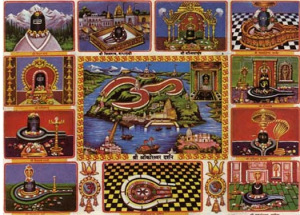
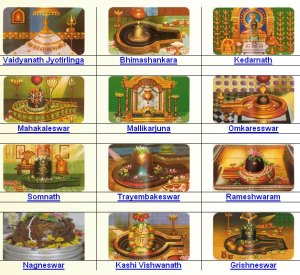
1 . Somnath Temple
“God Shiva guided the human souls to mukti – Jeevanmukti through spiritual intoxication by the liquor of spiritual knowledge.”
Somnath Temple Jyotirlinga is situated at Somnath Patan (the south coast of Saurashtra), near Veraval in (Prabhas Kshetra) Kathaiwad district in Gujarat. Somnath is considered to be the first of the Dwaadash Jyotirlingas of Shiva and is a revered pilgrimage center in India
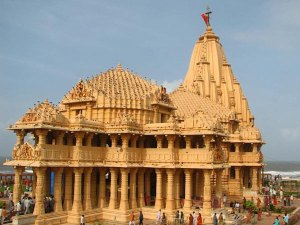
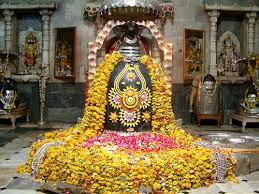
Skanda Purana, in a chapter on Prabhasa Khanda, describes the emergence of this Jyotirlinga. Legend goes that the moon was married to the 27 daughters of Daksha Prajapati. Amongst all his wives, he had special love towards Rohini and neglected the others. Seeing the negligence of Chandra towards his other wives Prajapati Daksha cursed Chandra that he would lose his beauty and radiance. But because of a moon devoid of radiance and beauty the entire world became lifeless. A disturbed Chandra, came down to Prabhasa with Rohini and worshipped the Sparsa Linga of Somnath after which he was blessed by Shiva to grow and shine in the bright half. As the moon regained his light here, this town came to be known as Prabhasa. Brahma, one of the trinity, installed the Brahmashila, and paved way for the construction of the temple. On the request of the Chandrama and other gods Bhagwan Shankar assumed the name Somchandra (Jyotirlinga) and resided there eternally. He became famous by the name Somnath in the three worlds. Since, it was the Prabhas Kshetra where Bhagwan Shri Krishna performed all his Lilas. In this temple there is a small cave in which a lamp burns continuously. The Skanda Purana describes the Sparsa Linga of Somnath as one bright as the sun, the size of an egg, lodged underground. The Mahabharata also refers to the Prabhasa Kshetra and the legend of the moon worshipping Shiva.
2 . Mallikarjunar
“God Shiva called as Mallikarjuna for made the human soul realize his true light forms (God’s) and transformed them into Arjuna winning maya.”
Mallikarjun Temple Jyotirlingam is situated on Shri Shaila Mountain by the banks of the Patal Ganga, Krishna River in the southern state of Andhra Pradesh. Also known as Kailash of the South, Mallikarjuna constitutes one of the Dwaadash Jyotirlingam shrines of Shiva and is one of the greatest Shaivaite shrines in India. The presiding deities of Mallikarjuna Temple are Mallikarjuna (Shiva) and Bhramaramba (Devi). Every year there is a fair organized on account of Mahashivratri.
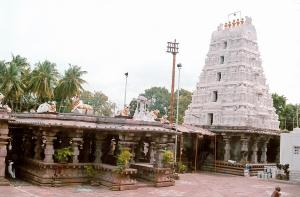
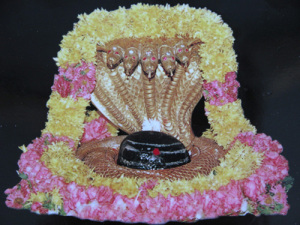
3 . Mahakaleshwar
“Liberated all the souls and took along with him to ‘Mukti’ (the soul world) that’s why God called as Mahakaleshwar.”
Mahakaleshwara Temple Jyotirlinga is located by the banks of river Kshipra, in the dense Mahakal forests in Ujjain, Madhya Pradesh. It is an important Shaivaite pilgrimage centre in North India and is revered as one of the Dwaadash Jyotilinga manifestations of Shiva
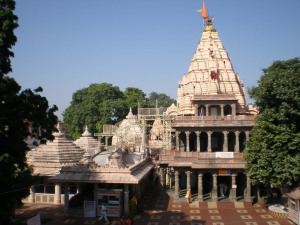
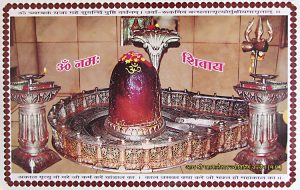
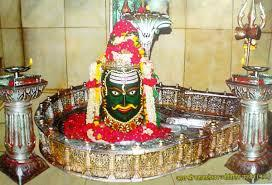
According to an episode narrated in Puranas, a five-year-old boy named Shrikar was enthralled seeing the devotion of King Chandrasena of Ujjain towards Lord Shiva. Shrikar took a stone and by considering it a linga started worshipping it regularly. Others thought that his worship as merely a game and tried to dissuade him in all ways. But all the efforts went in vain. On the contrary, devotion of Shrikar increased by every passing day. Pleased by the boy’s devotion Lord Shiva assumed Jyotirlinga form and resided in the Mahakal forest. According to another popular legend related to Mahakal Temple, a demon by name, Dushana tormented the residents of Avanti. Shiva appeared from the ground and vanquished the demon. Then, upon the request of the inhabitants of Avanti, Shiva took up a permanent abode here as Mahakaleshwara Jyotirlinga.
4 . Omkareshwarar
“As Almighty God Shiva revealed the mantra of ‘Om’, Om means ‘I – the soul’ he is given the title - Omkareshwarar.”
Omkareshwar Temple Jyotirlinga is situated on the mountain Mandhata by the banks of Narmada River in the Malva area in Madhya Pradesh. Omkareshwar Temple is one of the Dwaadash Jyotirlinga shrines of Shiva. The temple is closely linked with Mammaleshwar Temple (situated on the south of river Narmada) as both the forms of Shiva have been counted as one.
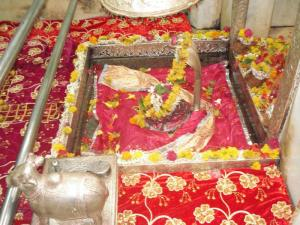
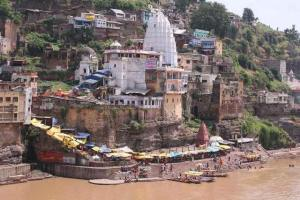
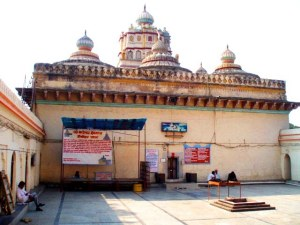
5 . Vaidyanathar
“Amarnath God Shiva treated the human souls with the ‘Amirt of knowledge’ made them healthy, wealthy, happy, & peaceful by eradicating lust and anger.”
Baidyanath Temple Jyotirlinga, also called Vaijnath Temple and Vaidyanth Temple is located at Deogarh in the Santal Parganas region of Bihar in the south west of Keeul Station. Baidyanath shrine is revered as one of the Dwaadash Jyotirlingam of Shiva. It may be noted that some schools of thought believe Vaidyanath near Parali in Andhra Pradesh to be the Vaidyanatha Jyotirlingam.
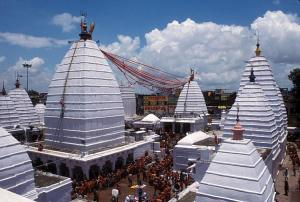
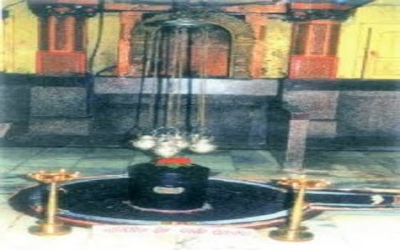
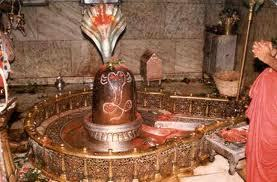
Devotees of Lord Shiva believe that by sincere worship of Vaijnath Jyotirlinga a person is relieved of all worries and miseries in life. It is also said that by worshipping in the shrine a person attains Moksha and all types of happiness. As a tradition, devotees carry ‘Kanwars’ on their shoulders and complete their travel here.
6 . Bhimashankar
“As God Shiva released the human souls from the slavery of vices, the giants, he is given the name.”
Bhimashankar Temple Jyotirlinga is situated in the ghat region of the Sahyadri hills in the village of Bhavagiri, 50-km north west of Khed, near Pune in Maharashtra. Bhima Shankar Temple lies on the banks of the river Bhima. Bhimashankar is also the source of the river Bhima, which flows southeast and merges with the Krishna River near Raichur. The other Jyotirlinga shrines in Maharashtra are Tryambakeshwar and Grishneshwar. It may be noted that according to the Shiv Purana the Bhimashankar Jyotirlinga is situated on the Mountain Brahmapur in district Kamrup, Assam.
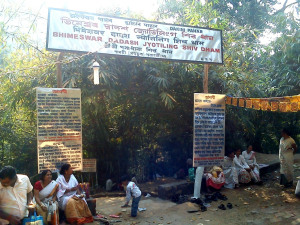
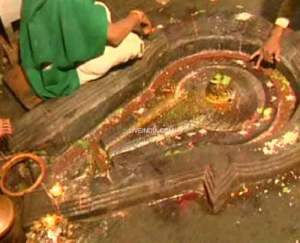
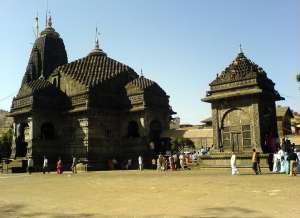
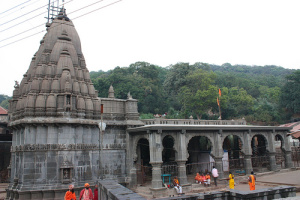
7 . Rameshwaram
“Almighty God Shiva released human souls from maya-ravanan (anger, lust, ego, greed, attachment), he is given the title.”
Rameshwaram Temple Jyotirlingam is situated in the island of Rameswaram, off the Sethu coast of Tamil Nadu and is reached via the Pamban Bridge across the sea. The huge temple is known for its long ornate corridors, towers and 36 theerthams. Rameshwaram Jyotirlinga represents the southernmost of the Dwaadash Jyotirlingams of India and has been a time honored pilgrimage center held on par with Banaras. Rameshwaram Temple Jyotirlinga is associated closely with the Ramayana and Rama’s victorious return from Sri Lanka.
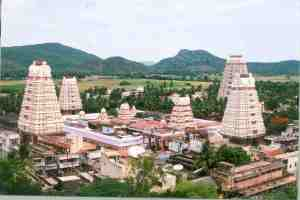
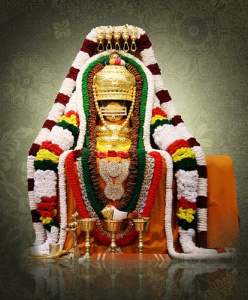
8 . Nageshwar
“Guided the human souls to attain true happiness escaping from the trap of serpents of vices with the power of knowledge and yoga (God’s remembrance)”
Nageshwar Temple Jyotirlinga or Nagnath Temple is located on the route between Gomti Dwarka and the Bait Dwarka Island on the coast of Saurashtra in Gujarat. The Jyotirlinga enshrined in the Temple of Nagnath is known as Nageshwar Mahadev and attracts thousands of pilgrims all round the year. This powerful Jyotirlinga symbolizes protection from all poisons. It is said that those who pray to the Nageshwar Linga become free of poison. The Rudra Samhita sloka refers to Nageshwar with the phrase ‘Daarukaavane Naagesham
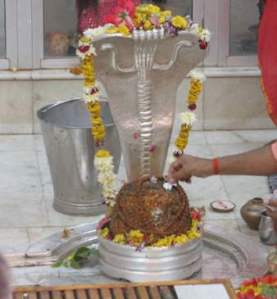
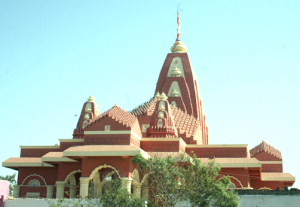
9 . Kaashi Vishwanathar
“Jyothirshorup creator God Shiva creates the new world which is filled with purity, peace and prosperity called as swarg for divine souls.”
Kaashi Vishwanath Temple Jyotirlinga is located amidst the crowded lanes in the holy city of Varanasi also known as Kashi and Benares. The Vishwanath Temple enshrines one of the Dwaadash Jyotirlingam of Lord Shiva and is one of the most revered pilgrimage sites for Hindus. It is believed that Varanasi is the point at which the first Jyotirlinga, the fiery pillar of light by which Shiva manifested his supremacy over other gods, broke through the earth’s crust and flared towards the heavens. More than the Ghats and even the Ganga, the Shivalinga installed in the temple remain the devotional focus of Varanasi. Millions of pilgrims converge here to perform an abhishekam to the sacred Jyotirlingam with sacred water of river Ganga.
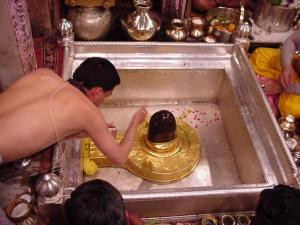
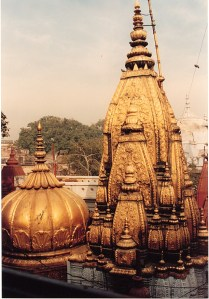
10 . Shri Triambakeshwar
“The God Eswar purified the human souls by snanam in spiritual knowledge of Ganges including knowledge of three worlds and cycle of time. ”
Shri Trimbakeshwar Temple Jyotirlinga is located at a distance of about 30-km from Nasik in Maharashtra near the mountain named Brahmagiri from which the river Godavari flows. Trimbakeshwar Temple is revered as one of the Dwaadash Jyotirlinga shrines of Shiva and as the source of the river Godavari. Just as Ganga is known as Bhagirathi and is one of the most important river in North India, in the same way, Godavari is also known as Gautami Ganga and is the most sacred river in South India
According to Shiv Purana, it is because of the earnest request of Godavari, Gautam Rishi and other gods that Lord Shiva agreed to reside here and assumed the famous name Trimbakeshwar. Interestingly, locals refer to the river here as Ganga and not as Godavari. All the heavenly Gods promised to come down to Nasik, once in twelve years, when Jupiter resides in the zodiac sign of Leo. On this a grand fair is organized at this place. Devotees take a holy bath in the Gautami Ganga and then seek the blessings of Trimbakeshwar
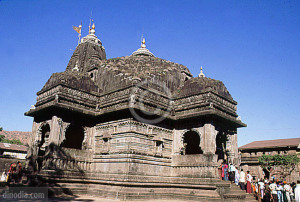
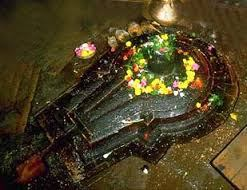
11 . Kedarnath
“The one who surrender his mind and intellect to Supreme power God Shiva & obeyed his directions lives very happily liberated from all sorrows.”
Kedarnath Temple Jyotirlinga : One of the holiest pilgrimages for the Hindus, Kedarnath Temple Jyotirlinga is located in the picturesque surroundings of Rudra Himalaya Range at a height of 12000 feet on a mountain named Kedar. Near Kedarnath is the source of the river Mandakini that joins Alakananda at Rudraprayag. This place is approximately 150 miles away from Hardwar and 132 miles north of Hrishikesh and is accessible by foot.
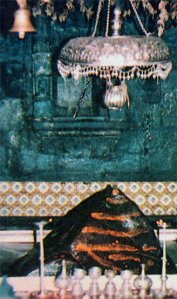
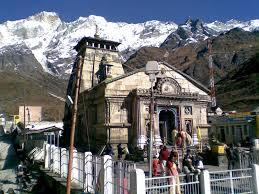
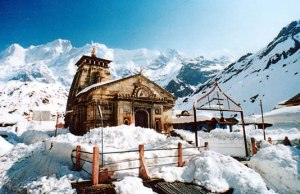
The temple at Kedarnath enshrining the Jyotirlingam of Shiva opens only 6 months a year (April-November) when the sun enters the zodiac sign of Aries and it is closed when the sun enters Scorpio. The priests then go to Ukhimath, where the worship of Kedareshwara is continued during the winter season.
Tradition has it that when undertaking Kedarnath Yatra pilgrims first visit Yamunotri and Gangotri and bring with them the holy waters from the sources of the rivers Yamuna and Ganga and offer abhishekams to Kedareshwara.
12 . Grishneshwar
“Lord shiva called as Grishneshwar for created awareness in human souls through Spiritual Knowledge.”
Grishneshwar Temple Jyotirlinga is an ancient pilgrimage site revered as the abode of one of the dwadash Jyotirlinga manifestation of Lord Shiva. The Grishneshwar Jyotirlinga shrine is located at a village called Verul, which lies 20 km from Daulatabad (near Aurangabad in Maharashtra) and approximately 100 kms from Manmad station.
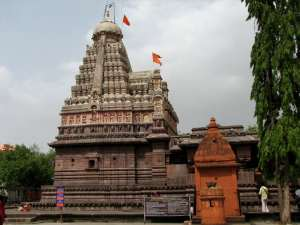
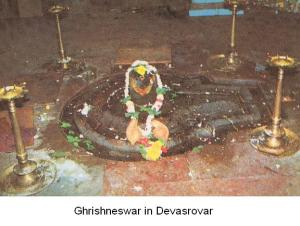
The Grishneswar Temple was constructed by Ahilyabhai Holkar who also re-constructed the Kashi Viswanatha Temple at Varanasi and the Vishnu Paada Temple at Gaya. The Grishneshwar jyotirlinga Temple is also known by several other names like Kusumeswarar, Ghushmeswara, Grushmeswara and Grishneswara.
